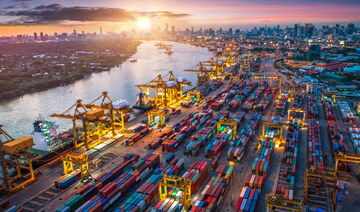Global Trade Reaches Record High, Driven by Services Sector
Global trade has reached a new record high of $33 trillion in 2024, marking a significant increase of 3.7 percent from the previous year. This growth is largely attributed to an uptick in the services sector, which rose by 9 percent for the year and added nearly $700 billion to total exchange expansion.
The latest Global Trade Update from the UN Conference on Trade and Development provides detailed insights into the global trade landscape. According to this report, the services sector has been a key driver of growth, accounting for approximately 60 percent of total exchange expansion. This sector’s resilience is noteworthy, as it contrasts with goods trade, which rose by only 2 percent and added around $500 billion.
Shift in Global Trade Dynamics
The UNCTAD analysis highlights a continued shift in global trade dynamics, with developing countries outperforming their developed counterparts. While many advanced economies faced exchange contractions, emerging markets sustained momentum, bolstered by strong exports and domestic demand. China’s trade surplus expanded significantly in 2024, fueled by robust exports. Meanwhile, the US trade deficit widened, reflecting its growing reliance on imports.
Emerging markets have been particularly resilient in the face of global economic uncertainty. South-South trade, involving exchanges between developing economies, has remained a key driver of global trade growth. This trend underscores the increasing importance of emerging markets in the global economy and highlights their potential for continued growth.
Challenges to Global Trade
Despite overall growth, UNCTAD warns of significant trade barriers that continue to hinder market access for developing countries. High tariffs remain a major obstacle, particularly in agriculture and manufacturing. The report notes that high import tariffs raise costs for businesses and consumers, potentially curbing growth and competitiveness.
Tariff escalation, where higher duties are imposed on processed goods than raw materials, remains a significant challenge to industrialization in developing economies. Agricultural exports from developing countries still face steep import duties, averaging nearly 20 percent under most-favored-nation treatment. Textile and apparel exports continue to be subjected to some of the highest tariff rates, limiting competitiveness.
Uncertainty Clouds 2025
Looking ahead to 2025, UNCTAD warns that mounting geopolitical tensions, trade disputes, and protectionist policies could disrupt global exchange. The report identifies several risk factors, including shifts in trade policy, ongoing trade tensions, subsidies and industrial policies, and economic slowdown risks.
However, the analysis also notes potential tailwinds, including China’s planned economic stimulus and the expected easing of global inflation, which could support trade expansion. Policymakers face a significant challenge in balancing growth with rising protectionism, emphasizing the importance of multilateral cooperation and strategic trade policies to sustain momentum and navigate emerging risks.
Sectoral Trade Trends
Trade growth varied significantly across sectors in 2024. Office equipment and pharmaceuticals saw above-average growth, while the energy sector faced a sharp decline. In the third quarter, agri-food, communication equipment, and transport surged, whereas apparel and extractive industries weakened.
This variation underscores the complexity of global trade dynamics and highlights the need for nuanced policies that address specific sectoral challenges. Understanding these trends is crucial for policymakers seeking to promote sustainable growth and mitigate risks.
Global Trade Imbalances
The report highlights growing trade imbalances, with the US maintaining the world’s largest trade deficit and China recording the highest surplus. The EU, which ran a deficit in previous years, returned to surplus in 2024, aided by shifts in energy trade.
Bilateral trade imbalances, particularly between the US and China, remain significant, contributing to global economic uncertainty. As global trade enters 2025, policymakers face the challenge of balancing growth with rising protectionism. UNCTAD emphasizes the importance of multilateral cooperation and strategic trade policies to sustain momentum and navigate emerging risks.
Conclusion
Global trade has reached a record high in 2024, driven by an uptick in the services sector. However, significant challenges persist, including trade barriers, geopolitical tensions, and growing imbalances. Policymakers must navigate these complexities through multilateral cooperation and strategic policies to sustain momentum and address emerging risks.
As global trade continues to evolve, understanding the nuances of sectoral trends, trade dynamics, and policy implications is crucial for promoting sustainable growth and mitigating risks. The importance of continued cooperation and strategic action cannot be overstated in this complex landscape.

